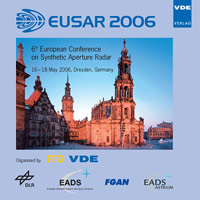The TerraSAR-X Satellite
Conference: EUSAR 2006 - 6th European Conference on Synthetic Aperture Radar
05/16/2006 - 05/18/2006 at Dresden, Germany
Proceedings: EUSAR 2006
Pages: 4Language: englishTyp: PDF
Personal VDE Members are entitled to a 10% discount on this title
Authors:
Pitz, Wolfgang (EADS Astrium GmbH, 88039 Friedrichshafen, Germany)
Abstract:
TerraSAR-X is a multi-role SAR Satellite with active phased array antenna technology which will be the backbone of the next German national radar Earth observation mission. With its large variety of different SAR imaging modes and its high operational flexibility, TerraSAR-X will ideally serve both the scientific community and users from the industrial sector. The innovative satellite system design is based on the rich experience from past German and European SAR space missions like X-SAR, SRTM, ERS 1&2 and Envisat combined with state-of-the-art Earth Observation Bus technology as used e.g. on the CHAMP and GRACE satellites. In a preparatory effort co-funded by the national agency DLR and its industrial partner EADS Astrium, the main new, performance critical SAR features of TerraSAR-X were thoroughly studied, and a sound market analysis was undertaken to define individual system requirements concerning image product characteristics and availability. Meanwhile, integration and testing of the TerraSAR-X satellite is sufficiently advanced to support launch and start of commercial operation in 2006. The paper describes the TerraSAR-X system design and performance, with emphasis on the SAR instrument and SAR-relevant features of the satellite bus. SAR product performance relevant elements of the satellite system architecture are discussed in particular. Also the additional payloads flying on TerraSAR-X – the Tracking, Occultation and Ranging experiment (TOR) furnished by the GeoForschungszentrum Potsdam (GFZ) and the Laser Communication Terminal (LCT) furnished by DLR with the industrial prime contractor Tesat – are briefly introduced. Finally, the pre-launch status concerning system verification is presented.


